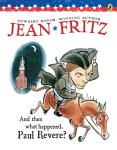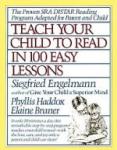Grades K-2
The Little Bear Treasury
Chanticleer and the Fox
Catholic Children's Treasure Box Books 1-6, story of St. Therese
And Then What Happened, Paul Revere?
This is a humorous yet informative account of Paul Revere's famous ride to alert the countryside that "the Redcoats" were coming. The details are quite interesting and carefully researched (down to a few details that Paul Revere liked to include when telling the story to his own grandchildren). There are a few slightly annoying details in the illustrations, but I wouldn't consider them serious (e.g. a picture of a Boston scene that includes a picture of a pirate's head – not detailed enough to be gory, but a bit gross) .
The Story About Ping
The Moon Seems to Change
This book, through simple illustrations and very readable text, gives young children (approximately Kindergarten thru third grade) an excellent explanation of the moon and the changes we can easily observe in it during a month. What often seem like complex concepts - the phases of the moon and its movement relative to the earth - are made very understandable through the text and a very simple experiment involving an orange stuck onto a pencil (a styrofoam ball stuck onto a chopstick worked quite well for us with less mess) and a flashlight.
Teach Your Child to Read In 100 Easy Lessons
The 100 EL is a direct instruction program. This means that the teacher's dialogue is scripted. The sessions are designed to take 20 minutes per day. We found them to take 15 to 30 minutes a day. If it takes any longer, I recommend to stop using the program for a few weeks to let things "jell" then go back to it. I did this periodically with both children and they did not forget any of the previous material when we went back to it.
Bob Books First!
In this first set (originally titled simply "Bob Books"), the stories start out very easy (words like Bob, Sam, sat, etc.) and very gradually increase in difficulty. All letters are introduced except "Q" and the stories are made up almost entirely of three-letter-words. We found the pace and order in which new words were introduced to be very helpful. We have used the Bob Books to teach two of our children to read. They were both interested in learning to read when they were four years old.
Bob Books Kids!
Formerly titled Bob Books Plus! I did not have this set when teaching my daughter to read, but have just started using it with my son (we picked it up at Sam's Club at a discount and thought it would be helpful for additional reading practice and confidence-building). The stories include practice of words ending in "y" and "ed" and the introduction of more two and three letter phonograms.








